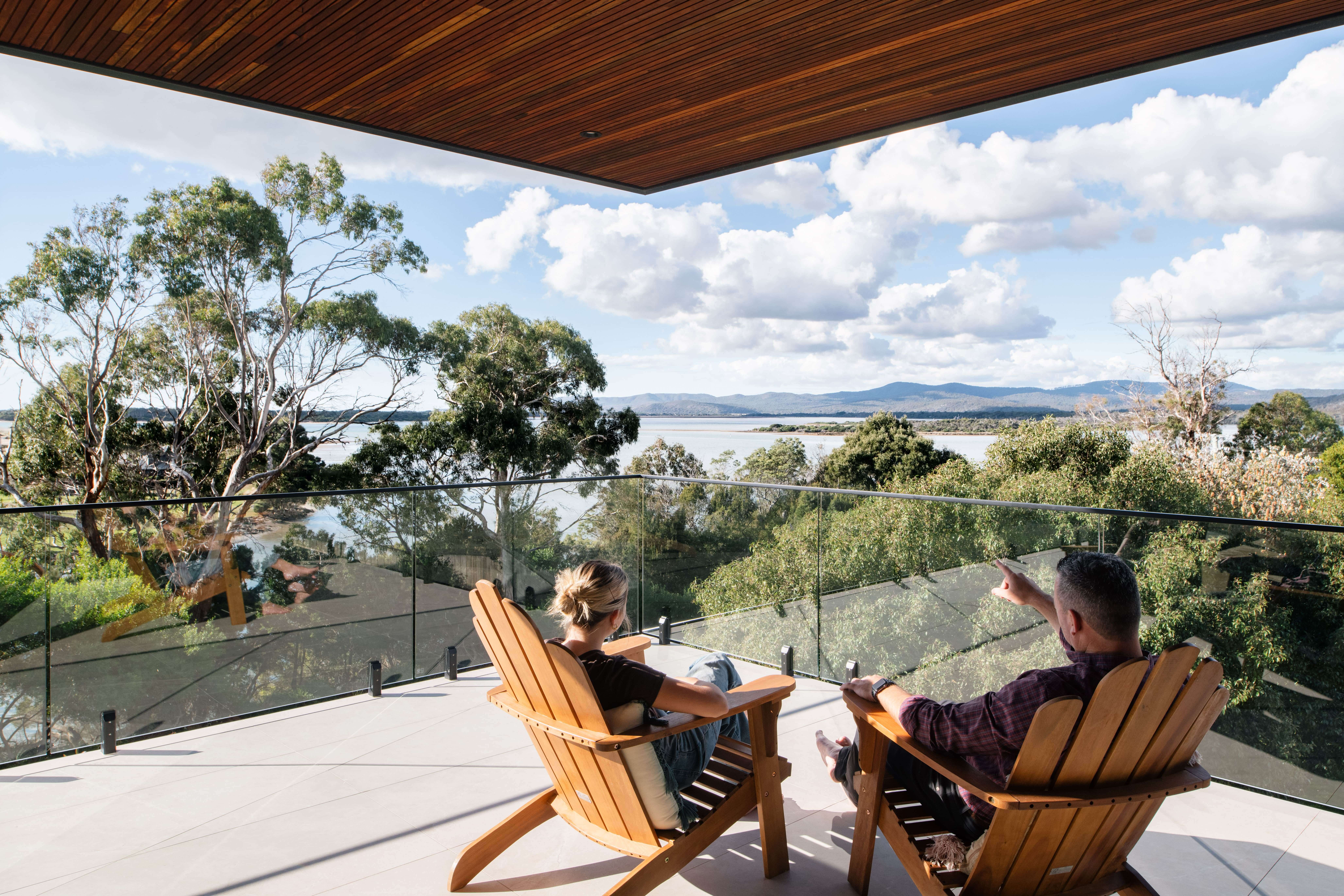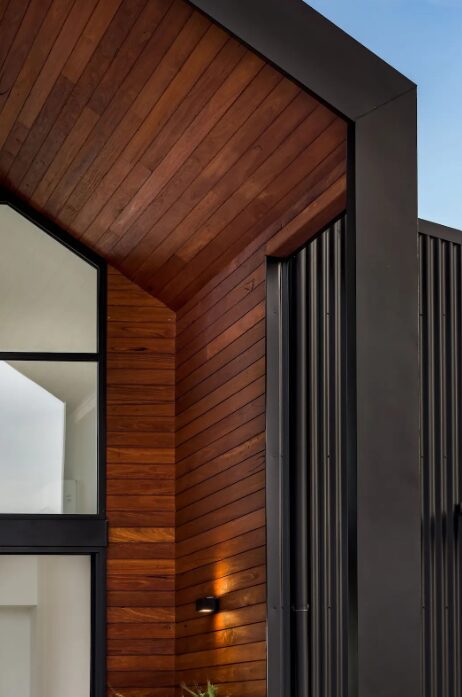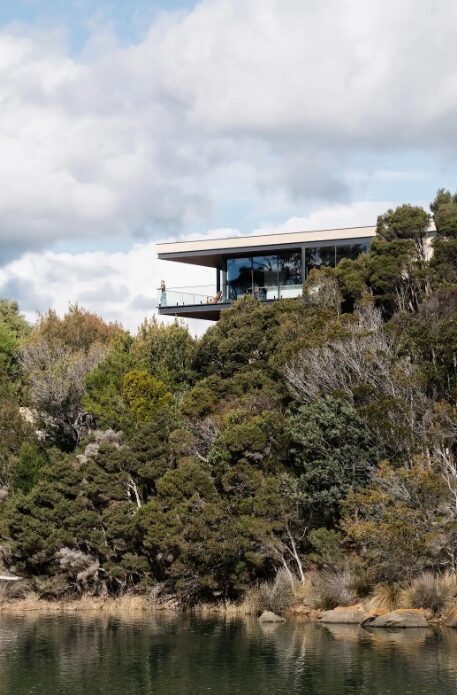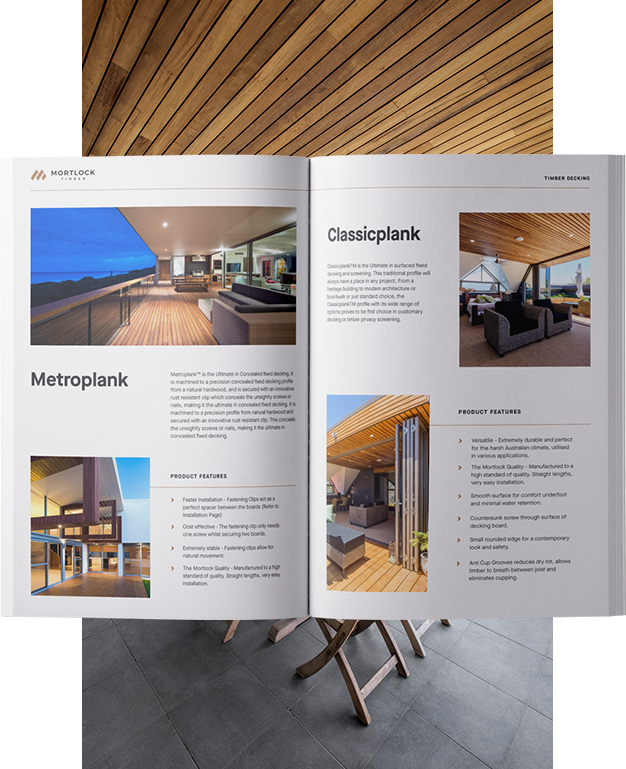Steel sheet vs timber cladding | Which one is better for the Australian climate?

In the process of designing a building, architects and developers encounter a pivotal choice: selecting the ideal cladding material. In Australia, two prominent options—steel sheet and timber cladding—each bring distinct advantages, tailored to the specific demands of a project.
Yet, the formidable and variable Australian climate poses unique challenges, making this choice even more critical. In this blog, we delve into the differences between steel sheet and timber cladding, particularly emphasising their performance across Australia’s diverse climate zones.
Durability
Durability is fundamental when selecting cladding materials, especially for external cladding. Australia’s climate, spanning tropical to arid extremes, rigorously challenges the resilience of these materials. Here, we examine the crucial factors influencing the durability of steel sheet and timber cladding:
Steel sheet
- Robustness: Steel is highly resistant to physical impact and extreme weather conditions.
- Corrosion risk in coastal areas: Steel sheets can rust in coastal regions due to salt-laden air, but modern steel is often galvanised or coated with anti-corrosion treatments to improve longevity.
- Bushfire resistance: Steel is non-combustible, making it an ideal choice for bushfire-prone areas in Australia.
- Thermal performance: Steel can expand and contract with temperature changes, potentially causing warping and requiring maintenance.
- Heat absorption: Steel absorbs heat in hot climates, which can increase building temperatures unless combined with adequate insulation.
Timber cladding
- Natural resistance:Native Australian timbers like Blackbutt and Ironbark are naturally resistant to termites, rot, and decay, making them ideal for external use.
- Moisture performance: Timber cladding performs well in high humidity or rainfall regions, as long as it’s treated and maintained to prevent water absorption.
- Heat resistance: Many Australian timbers, such as Jarrah and Spotted Gum, have high fire ratings, making them suitable for bushfire-prone areas.
- Thermal insulation: Timber is a natural insulator, helping to regulate internal temperatures, keeping homes cooler in summer and warmer in winter.
Sustainability
Sustainability is at the forefront of modern construction, and both steel and timber have distinct environmental impacts.
Steel sheet
- High carbon footprint: The production process for steel is energy-intensive, contributing significantly to carbon emissions.
- Recyclability: Steel is highly recyclable, and although the recycling process requires energy, it helps reduce the material’s long-term environmental impact.
- Long lifespan: Thanks to its durability, steel cladding can last for decades, offsetting some of the environmental costs associated with its production.
Timber cladding
- Carbon sequestration: Trees absorb carbon dioxide from the atmosphere as they grow, storing it within the wood for the duration of its use.
- Eco-friendly harvesting: Timber harvested from sustainably managed forests, such as those certified by PEFC, is an environmentally responsible choice.
- Low energy processing: Timber requires significantly less energy to process compared to materials like steel.
- Biodegradability: Timber is naturally biodegradable, reducing its environmental impact at the end of its lifecycle.
- Long-term sustainability: Sustainably sourced timber contributes to lower carbon emissions throughout its lifecycle, making it a greener building material option.
Visual appeal and design flexibility

Steel sheet
Steel cladding is frequently chosen for its refined, contemporary aesthetic, lending itself to industrial or minimalist architectural styles. Available in a range of finishes and colours, it can be tailored to meet diverse project requirements. However, the understated elegance of steel may not complement all design visions, particularly those seeking a more natural or rustic ambience.
Timber cladding
Timber, on the other hand, offers warmth, which complements a variety of architectural styles. Whether it’s the bold, dark tones of Burnt Ash or the lighter, more neutral tones of American Oak, timber creates natural beauty and texture to a building. Furthermore, timber weathers naturally to a silver-grey patina, adding a timeless quality to the material, and making it a favourite for projects where aesthetics are a priority.
Timber also offers extensive flexibility in terms of species, profiles, finishes, colours and textures. This customisation allows architects to design something truly unique, tailored to the vision of their project.
Maintenance requirements
Steel sheet
Steel cladding is renowned for its low-maintenance qualities, a significant advantage in architectural design. Requiring no painting or staining, it typically maintains its appearance with only occasional water cleaning. However, in regions susceptible to rust—particularly coastal areas—routine inspections are essential to ensure its protective coatings stay intact.
Timber cladding
Timber cladding, while durable, requires more upkeep to maintain its appearance and structural integrity. Regular staining or oiling is recommended to protect it from UV exposure and moisture which accelerates the natural weathering process. However, if you prefer the natural weathered look of greyed timber, you can ease off the maintenance as the timber’s weathering process can be embraced as part of the design.
Cost considerations
Steel sheet
Initially, steel cladding tends to be more cost-effective than timber, especially for large-scale projects. Its longevity and low maintenance requirements also mean lower long-term costs. However, installation can be more complex, especially if insulation or additional protective layers are needed.
Timber cladding
Timber can be more expensive initially, depending on the species chosen. However, its thermal efficiency, visual appeal, and sustainability credentials make it a worthwhile investment.
So which one is better for the Australian climate?

Both steel sheet and timber cladding offer distinct advantages; however, the optimal choice ultimately depends on the specific requirements, location, and objectives of your project.
Steel is a great choice for:
- Industrial or minimalist designs
- Projects in harsh environments like bushfire-prone areas
- Low-maintenance and budget-conscious projects
Timber cladding is ideal for:
- Designs that prioritise natural beauty and warmth
- Projects focused on sustainability and reducing environmental impact
- Areas requiring good thermal insulation, such as temperate or cooler climates
If timber cladding feels like the right choice for your project, Mortlock Timber can guide you through selecting the ideal species, finish, and system to suit Australia’s diverse climate conditions.
Our sustainable timber cladding options not only enhance structural durability but also elevate the aesthetic appeal of any design. Get in touch with our team today to explore how we can bring your vision to life.
View our pricing and product guide

We are committed to bringing you timber products that add value and endure for years to come, even in heavy traffic and harsh weather conditions. We understand the value of efficiency when it comes to installation and keeping hardwood timber costs down. That’s why we’ve spent decades perfecting our designs to make them easier to handle, less wasteful and more efficient to install. This efficiency allows us to offer you premier products that are more cost-effective so that you can experience greater savings on timber wall costs, timber ceiling costs, timber cladding costs and timber decking costs.
Download our Pricing and Product Guide for our complete hardwood timber price list including timber decking prices, timber wall prices, timber ceiling prices and timber cladding prices.
